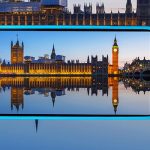Key European leaders met at the AI Action Summit to discuss ways to cut unnecessary regulations, aiming to let artificial intelligence flourish across the continent. This marks a noticeable shift toward the U.S. approach, which favors minimal regulation.
This summit in Paris succeeded the AI Safety Summit in the UK last November and the AI Seoul Summit in May, which primarily tackled risks associated with AI and emphasized safety through international collaboration. However, some groups worry that the recent focus has shifted from safety to speed and innovation.
U.S. Vice President JD Vance emphasized this at the summit, claiming, “Excessive regulation of the AI sector could kill a transformative industry.” He urged Europe to embrace a more optimistic view of AI and warned against stifling its development.
Vance’s remarks came after President Trump repealed an order that mandated AI developers share safety testing results with the U.S. government. That decision raised concerns about potential regulatory contradictions among the U.S., Europe, and China. Vance insisted that while regulations are necessary, the current priority should be on seizing the opportunities AI presents.
Industry leaders echoed this sentiment, believing that a lighter regulatory touch would boost innovation. On the summit’s first day, Google CEO Sundar Pichai highlighted the importance of uniform regulations, stating, “AI can’t flourish if there is a fragmented regulatory environment.” He stressed that Europe must drive adoption to remain competitive.
Pichai also urged governments to better invest in AI ecosystems, noting the rapid integration of the technology in France and questioning how to replicate that success elsewhere.
OpenAI CEO Sam Altman shared similar thoughts in an op-ed, pushing for a focus on innovation. He warned of a potential “innovation gap” with the U.S. and China, which he described as a threat to Europe’s future.
French President Emmanuel Macron and EU digital chief Henna Virkkunen eagerly expressed their commitment to simplifying regulations. Macron discussed adopting a “Notre Dame” strategy, referring to the swift rebuilding of the cathedral, to make processes for AI development quicker and more efficient. Virkkunen agreed on the need to reduce overlapping regulations to ease the burdens on industries.
With France planning to invest €109 billion in data centers and AI initiatives, Macron reaffirmed that France is back in the AI race. Meanwhile, European Commissioner Ursula von der Leyen countered the claim that Europe is lagging, arguing that the race is still very much alive and Europe has an opportunity to lead, particularly through open-source approaches. She announced an additional €200 billion for EU AI investments, emphasizing the need to cut red tape.
Despite these encouraging statements, some experts are worried about a concerning trend in global AI discourse. Kasia Borowska from Brainpool AI warned that prioritizing innovation over regulation poses serious safety risks. She urged for solid controls before attempting to rush toward advancements like artificial general intelligence (AGI).
Chris Williams from Clyde & Co echoed this concern. He noted a shift from the earlier “safety first” mentality, suggesting that while cuts to regulation might seem appealing now, long-term safeguards are essential as AI evolves.
Gaia Marcus from the Ada Lovelace Institute also voiced apprehension about the draft declaration from the summit, which she felt does not adequately prioritize safety. She pointed out the lack of accountability measures for tech companies, stressing the need for actions that align with public safety expectations.
Overall, the conversation at the summit signals a critical juncture for AI regulation, balancing innovation with the essential oversight needed to ensure public trust and safety.









